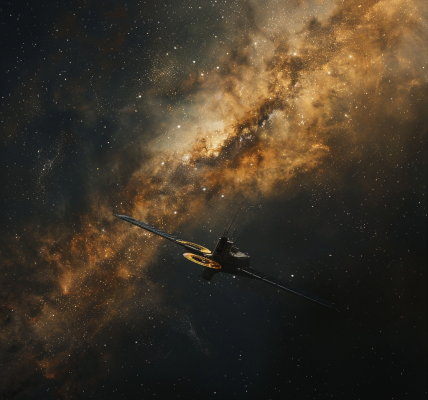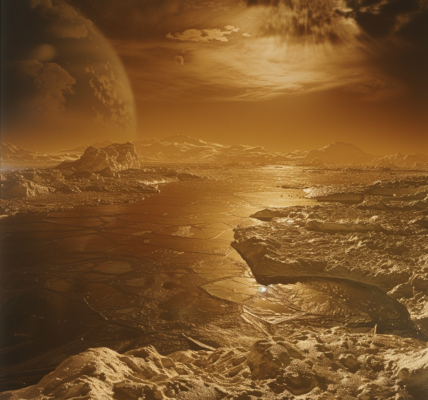Recent Astronomical Discoveries: A Glimpse into the Cosmos
In the ever-expanding realm of astronomy, recent discoveries have captivated the scientific community and stargazers alike. Among the most thrilling findings are the detection of an Earth-mass exoplanet orbiting a distant white dwarf, the unearthing of new dinosaur relatives, and groundbreaking insights into ancient ecosystems.
Earth-Mass Exoplanet Discovered
A remarkable discovery has emerged in the field of exoplanet research with the identification of an Earth-mass planet orbiting a distant white dwarf. This significant finding opens up new avenues for understanding planetary systems beyond our own and raises intriguing questions about the potential for life in such distant worlds.
White dwarfs are the remnants of stars that have exhausted their nuclear fuel and shed their outer layers. The presence of a planet in orbit around such a stellar remnant suggests complex interactions that could mirror the dynamics of our own solar system.
Asteroid Impact’s Legacy: Ants as Fungus Farmers
A recent study has shed light on the aftermath of the dinosaur-killing asteroid impact that occurred approximately 66 million years ago. Researchers propose that this catastrophic event significantly altered ecosystems, leading to an unexpected evolution in ant species. According to the study, ants began cultivating fungi as a food source in the wake of the devastation, marking a pivotal shift in their behavior and ecological role.
This evolutionary adaptation highlights the resilience of life and the intricate relationships that can develop in response to catastrophic environmental changes. The findings underscore the importance of studying ancient events to understand current biodiversity and ecological interactions.
New Dinosaur Relative Unearthed in Brazil
In a thrilling development for paleontology, a new species of dinosaur relative has been discovered in Brazil. This remarkable find adds to the rich tapestry of dinosaur diversity during the Mesozoic era and provides valuable insights into the evolutionary pathways of these ancient creatures.
The discovery was made in a region known for its rich fossil beds, and the new species exhibits unique characteristics that differentiate it from previously known relatives. Paleontologists are excited about the implications of this find for understanding the evolutionary history of dinosaurs in South America.
TESS’s Record-Breaking Triple Star System
The Transiting Exoplanet Survey Satellite (TESS) has made headlines with its discovery of a record-breaking triply-eclipsing triple star system. This remarkable celestial arrangement features three stars that eclipse one another in a complex dance, providing a unique opportunity for astronomers to study stellar interactions and dynamics.
Such systems are rare, and their study can yield insights into stellar evolution and the formation of planetary systems. The data collected from this triple star system will enhance our understanding of the cosmos and the forces at play in stellar environments.
Sub-Earth-Mass Exoplanet Detected Around Barnard’s Star
A significant breakthrough in exoplanet research has occurred with the detection of a sub-Earth-mass exoplanet orbiting Barnard’s Star, one of our nearest stellar neighbors. This discovery adds to the growing list of exoplanets found around red dwarf stars and raises intriguing possibilities about the conditions that might support life.
Barnard’s Star is of particular interest due to its proximity, and the new findings will likely spur further investigation into its planetary system. The implications of such discoveries are profound, as they could reshape our understanding of where life might exist in the universe.
New Sauropod Species Unveiled
Paleontologists have announced the unveiling of a new species of sauropod dinosaur, further enriching our understanding of these magnificent creatures that once roamed the Earth. The new species, characterized by distinct morphological features, provides insights into the diversity and adaptability of sauropods during the Late Jurassic period.
Fossils of the newly identified sauropod were discovered in a location known for its rich fossil deposits, and researchers are eager to explore the ecological implications of this find. Understanding the lifestyle and habitat of this species will contribute to the broader narrative of dinosaur evolution.
New Tyrannosaur Species Discovered in Mexico
In a thrilling revelation, a new species of tyrannosaur has been unearthed in Mexico, named Labocania aguillonae. This discovery adds a new chapter to the story of one of the most iconic dinosaur families and offers fresh perspectives on the diversity of predatory dinosaurs in prehistoric ecosystems.
The identification of Labocania aguillonae is significant not only for its unique characteristics but also for what it reveals about the geographic distribution of tyrannosaurs. The fossil evidence suggests that these formidable predators had a wider range than previously thought, prompting further questions about their evolutionary history.
Hubble’s Stunning View of NGC 5248
In the realm of galactic studies, the Hubble Space Telescope has captured a breathtaking image of the grand design spiral galaxy NGC 5248, located approximately 42 million light-years away in the constellation of Boötes. This striking image was produced using Hubble’s Wide Field Camera 3 (WFC3), which utilized multiple filters to capture various wavelengths of light, resulting in a vivid color representation of the galaxy.
NGC 5248, also known by various catalog names, boasts a diameter of 95,000 light-years and is characterized by its prominent spiral arms and nuclear rings of starburst activity. The intricate features of this galaxy provide astronomers with a wealth of information about galactic formation and evolution.
Hubble astronomers have noted that NGC 5248 exhibits a faint bar structure at its center, which plays a crucial role in the movement of matter within the galaxy. The presence of such structures influences the flow of gas from the outer regions to the inner star-forming areas, potentially fueling the growth of the central black hole and shaping the galaxy’s future.
As astronomers continue to explore the cosmos, these discoveries not only enhance our knowledge of the universe but also inspire curiosity about the mysteries that lie beyond our planet. Each finding contributes to the broader understanding of astronomical phenomena and the history of life on Earth.





